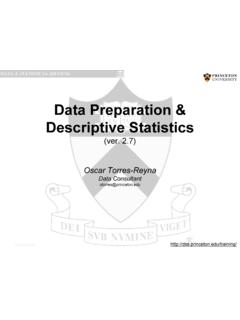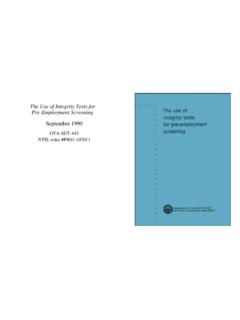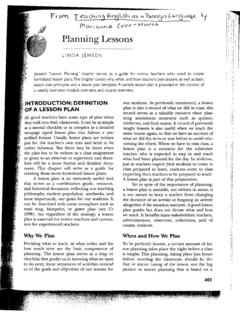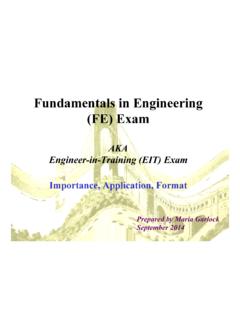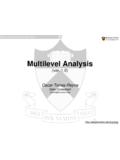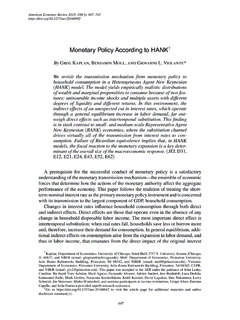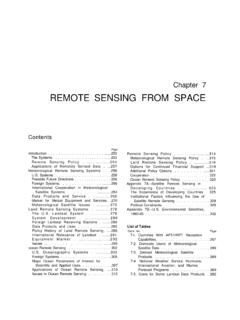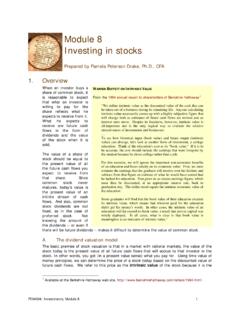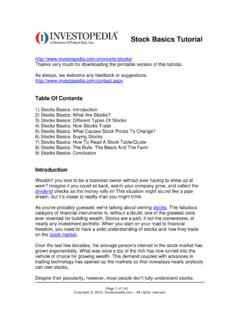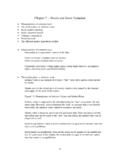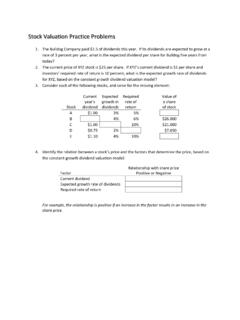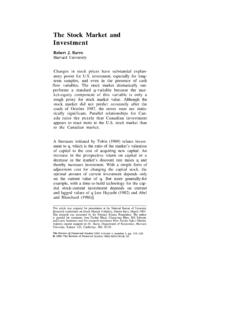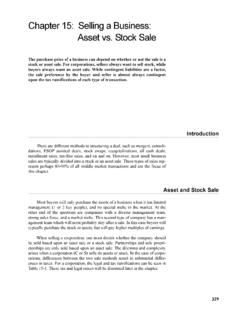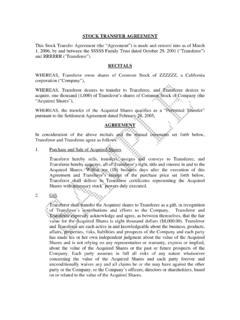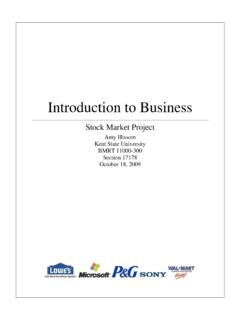Transcription of Econometric Analysis of Stock Price Co-movement
1 1 Econometric Analysis of Stock Price Co-movement in the Economic Integration of East Asia Gregory C Chow a Shicheng Huang b Linlin Niu b a Department of Economics, princeton university , USA b Wang Yanan Institute for Studies in Economics (WISE), Xiamen university , 361005, Xiamen, Fujian, China Abstract This paper studies the economic integration of East Asian economies among one another and with the US using Co-movement of Stock market prices. Both time-varying correlations and regressions are employed. We have traced the increased integration from 1980 to 2011 among the NIEs of Korea, Hong Kong, Taiwan and Singapore, the increase in integration of China since the Shanghai Stock market opened in 1990 and the effect of the recent great economic recession of the US on its economic influence on the East Asian economies.
2 JCL Classification, C22, G12 Key words: economic integration, time-varying regressions, East Asia, China, US, Japan, Stock prices. 2 1. Introduction The purpose of this paper is to study the economic integration of East Asian economies by observing the co-movements of weekly returns of stocks traded in their markets. Using time varying correlation and regression we trace the Co-movement for a pair of markets in the three decades from 1980 to 2011. Three sets of economies are studied. The first is the newly industrial economies NIEs in East Asia, including Korea, Hong Kong, Taiwan and Singapore. The second consists of the three large economies of Japan, the US and China. Thirdly we consider the relations between the second set and the first set.
3 The inter-relationships between US, Japan and other Asian-Pacific equity markets have been widely recognized. Early studies show that, in the 1970s and 1980s, the US Stock market influences most of the Asian Pacific Stock markets and that the J apanese market seems to have less significant impacts. Related empirical evidences can be found in Liu and Pan (1990) and Cheung and Mak (1992). While in the 1990s, such pattern changed. Masih and Masih (1999) find Asian markets are affected more from each other, rather than from the developed markets. Ghosh, Sandi and Johnson (1999) find that Indonesia, Philippines, and Singapore are closely linked with Japan; while Hong Kong, India, Korea, and Malayasia are more linked with US.
4 Ng (2000) finds significant regional shocks from Japan to Asian Pacific Stock markets, besides global shocks from US; Johnsen and Soenem (2002) find Asian Markets are highly correlated with Japan in the 1990s. Miyakoshi (2003) finds volatility of the Asian markets is influenced more by the Japanese market. Meanwhile, there exist significant adverse influences from the Asian markets on Japan. Huang, Yang and Hu (2000) show that, compared to Japan, US has stronger impact on Shanghai, Shenzhen and Hong Kong Stock markets. Based on the previous studies, we can expect that the equity market inter-relationships vary over time. Especially, due to the recent financial crises, there may exist structural changes in the international co-movements of equity markets.
5 For example, Yang, Kolari and Min (2002) find 3 cointegration relationships among countries change over time, often strengthened around the period of financial crises. In this paper, we study the process of economic integration of East Asian economies in the past three decades using the co-movements of their Stock prices. To trace co-movements, we use two measures, time-varying correlation by rolling window estimation and time-varying coefficients in regressions between markets. While correlation is a symmetric indicator on interrelationship, time-varying coefficients can measure asymmetric impacts from one market to another and vice versa. The time-varying coefficients method, traced back to Chow (1984), can be used to show how the interrelationship of these equity markets evolve over time.
6 In particular, compared to multivariate GARCH or stochastic volatility models, our method is not only valid in the presence of conditional heteroskedasticity frequently existing in Stock returns, but also suitable when unconditional variance-covariance changes in a long span of time, three decades in our case. While multivariate GARCH models and stochastic volatility models tend to capture high frequency changes in volatility and covolatility, our method can better reveal the underlying smooth structural changes in the long run. The rest of this paper is organized as follows. In section 2 we first describe the data and present time-varying correlations for the three sets of countries. In section 3, we present models of regression with time-varying parameters to study the Co-movement between the rates of return for stocks traded in different Stock markets.
7 Section 4 discusses the results of time-varying coefficients with the three sets of economies to depict the changing co-movements of East Asian economies among themselves and with US market. Section 5 concludes. 2 Data The data in this study consist of the weekly close Price of Stock market indices in Korea, Hong Kong, Taiwan, Singapore, Japan, United States and Mainland China. The indices include Korea Composite Stock Price Index (KOSPI), Hang Seng index for Hong Kong, TSEC weighted index for Taiwan, Straits Times Index (STI) for Singapore, NIKKEI 225 index for Japan, NYSE Composite Index for US and Shanghai Composite Index for China. All these indices cover the 4 sample period of January 1980 to July 2011, except for China.
8 The Shanghai Composite Index data start from January 1992, one year after the Shanghai Stock Exchange was established in December 1990. All data can be retrieved from Datastream. Since Price indices are non-stationary, the co-movements between markets are difficult to be assessed with traditional Econometric models. We transform the data into stationary process by calculating weekly returns from the Price indices as the log difference in Price : . With the return data, we can compute the variance of each market, and covariance or correlation between any pair of two markets. To reflect the change over time, we use a rolling window of 52 weeks, about one year, of current and past returns to compute the variance and correlation at each point in time.
9 We first examine the economic integration among the NIEs. The results are graphically given in Figure 1. We present the results in the lower triangular part of a matrix, where the name of each market is denoted on the top and to the left of the figure. The diagonal boxes plot variances of the corresponding economies along time, and the off-diagonal boxes plot correlations between two economies. [Figure 1 about here.] From Figure 1 we observe heteroskedasticity evident in the variances. There are various spikes in the variances across markets, and some of them coincide with each other during financial crisis, such as the Asian financial crisis in late 1990s, and the recent global financial crisis. For Taiwan, the most unusual spike in volatility happened in 1ate 1980s and 1990, echoing the Price surge of 10 times within a year and a sudden crash at the end.
10 In terms of pattern and timing, the Taiwan Stock surge in 1ate 1980s and crash in 1990 were in tandem with Japan that can be seen later in Figure 2 from the variance of Japan, but only with amplified scale and sharper fall, which dwarfs the magnitude of turmoil from later crisis. The dynamics of variances reveals that there 5 are co-movements in volatility between markets. To assess the extent of Co-movement , we next look at correlations adjusted for the scales of variances. The off diagonal boxes plot correlation between each pair of economies. Beginning with Korea from the first column, the increasing trends of the correlation with the three other economies are apparent, together with fluctuations that may reflect historical events too detailed to be studied in this paper.
